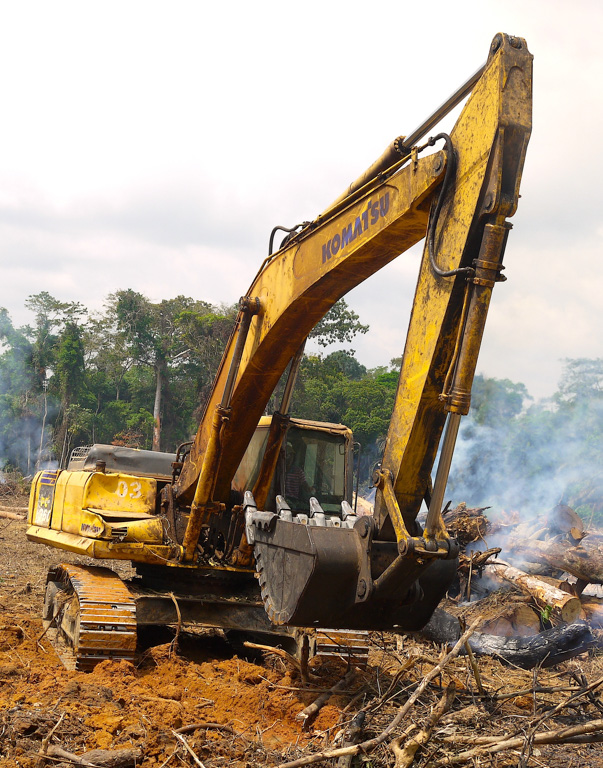- Bill Laurance, a tropical ecologist at Australia’s James Cook University, argues that scientists should work to slow the pace of infrastructure development around the world.
- ‘Delaying’ the process of development will allow time for the merits — and the potential dangers to the environment, communities and economies — to be debated publicly.
- While many of these projects are viewed as wholly positive because they’re intended to connect markets and create jobs, a lot of them ‘should not happen,’ Laurance said.
It’s time to slow the pace of the wave of road, dam and railroad building sweeping over the globe, says Bill Laurance, a tropical ecologist at James Cook University in Cairns, Australia.
“[There is] still this implicit assumption that the project’s going to happen [and] we can’t stop it,” Laurance said in an interview.
In an essay published June 14 in the journal Trends in Ecology & Evolution, he lays out a strategy for scientists and conservationists to “disclose, debate [and] delay” these projects. Laurance’s own research has shown the widespread effects of infrastructure development that ripple through an ecosystem. And they often don’t make a lot of sense from a social or economic perspective either.

What’s critical now, Laurance said, is drawing out that process long enough for that debate to happen, even as many politicians and developers, especially in developing countries, are convinced that rapid infrastructure development will boost economies.
They’ll argue that “It’s growth, it’s good, it’s jobs, it’s employment, it’s positive, no matter really what the project is,” he said. “That line of thinking seems to be so pervasive.”
As a result, the projects are often green-lighted swiftly and sent careening through the approvals process — so quickly that it can leave scientists and planners resigned to the inevitability of the project. They then narrow their focus to small “greening measures” to a project’s design aimed at avoiding adverse impacts to habitats, biodiversity and water resources.
For example, they might include an underpass for wildlife, intended to soften the impact of a road when it cuts through a forest by connecting the bisected populations. The thought is that a bit of “greening” will offset the harm caused by the road, Laurance said, adding, “I think that’s a devastatingly dangerous argument.”

In the case of viaducts aimed at allowing the passage of elephants and other animals, an investigation by one of his former students in Southeast Asia revealed that they don’t always work as intended.
In reality, “A lot of these projects should not happen in the first place,” Laurance said.
Instead, scientists should take an active role in assessing whether projects are worth the environmental, social and financial tolls, he said. Greening steps should be reserved for special cases where a project is already going ahead.
“It’s not just greening,” Laurance added. “It’s screening.”
In many instances, if it made sense to site a road in a specific location — to connect agricultural areas to markets, for example — “They probably would have been built there in the first place,” Laurance said.
Other locations might be pounded by high annual rainfall, which can balloon yearly maintenance costs to 10 to 20 percent of the initial cost of the project, especially in hilly terrain, his team’s research has shown.
Their work in Africa has also revealed that many planned roads and rail lines would penetrate into sparsely populated areas that aren’t very good for farming because the soils aren’t fertile.
In many cases, “There’s a reason why there are not people are there already,” Laurance said.

He said he believed that by pulling back the shroud on many infrastructure projects in the planning stages, the risk that they bring — whether to the environment, the social structure of communities or governments’ bottom lines — will become apparent as their merits are sorted out in the public forum.
“‘Risk’ is a word that everybody gets,” Laurance said.
With the true costs revealed, only the best projects that benefit the most people will move forward.
“It’s happening so fast,” he said. “Really, the challenge is to just do whatever we can to try to slow down, put on the brakes [and] argue for broader debate and discussion before these projects get approved.”
Banner image of road construction in Malaysian Borneo by John C. Cannon/Mongabay.
John Cannon is a Mongabay staff writer based in the Middle East. Find him on Twitter: @johnccannon
Editor’s note: William Laurance is a member of Mongabay’s advisory board.
Citation
Laurance, W. F. (2018). Conservation and the Global Infrastructure Tsunami: Disclose, Debate, Delay! Trends in Ecology & Evolution.
FEEDBACK: Use this form to send a message to the author of this post. If you want to post a public comment, you can do that at the bottom of the page.
